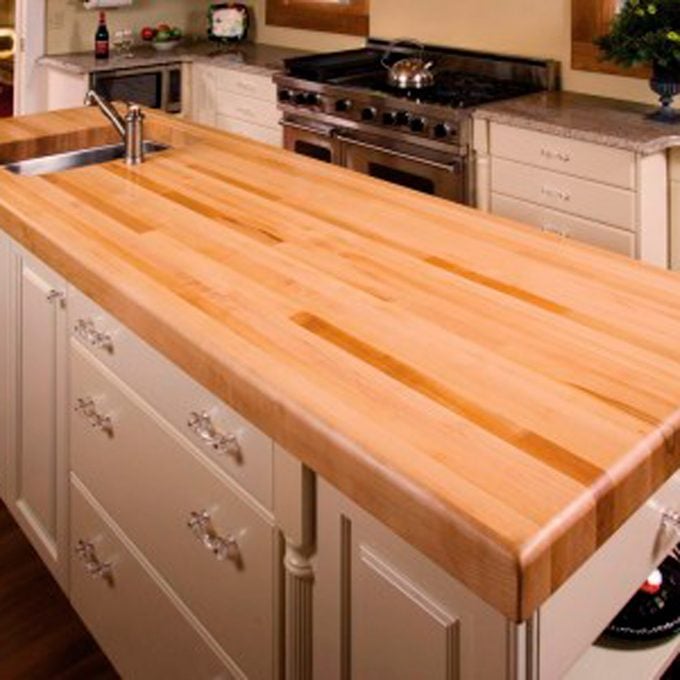You’ve moved into a home that has butcher block countertops. Lucky you! But, if you’re apprehensive, here’s what you need to know about these beautiful, natural work surfaces.
What to Know About Your Butcher Block Countertop

You’ve moved into a home that has butcher block countertops. Lucky you! But, if you’re apprehensive, here’s what you need to know about these beautiful, natural work surfaces.
Butcher block checks off a whole lot of boxes on the list of nice-to-have features in a countertop.
Durable? Yes! It’s a true work surface for food preparation.
Eco-conscious? Many are certified green.
Affordable? Costs more than laminate but typically much less than solid surface and natural stone.
The warmth of a wood countertop adds tremendous character to a kitchen. And the kitchen will be quieter because dishes don’t clatter on wood the way they do on most other surfaces.
Types of Butcher Block
Butcher block countertops are made of hardwoods, like maple, cherry and red oak. You can also find bamboo and reclaimed wood as options. Butcher block can be finished with a waterproof sealant like polyurethane (recommended around sinks or anywhere else that might need to be impermeable), but then you won’t be able to cut directly on the countertop. Or you can treat it with mineral oil, which repels moisture and allows you to cut on it.
There are three types of butcher block. They’re distinguished by what part of the boards are visible on the surface.
- Edge grain: Strips of wood are laminated together with their edges on the surface.
- End grain: Picture traditional butcher block cutting boards. End grain is somewhat more durable than edge grain, according to Wood Welded, and tends to show less wear than edge grain.
- Face grain: The broad side of boards create the surface, so it has fewer seams.
If you want this look in your kitchen, then here’s how to install butcher block countertops.
Material Costs
If you’re curious, according to Butcher Block Co., material costs range from about $35 to $200 per square foot, depending on the type of wood and the grain style. Compare that to solid surface ($75 to $150) and granite ($100 to $250).
Edge grain tends to be the cheapest option. Maple is the cheapest wood, then red oak, followed by cherry and then walnut. Prices also vary depending on the thickness.
Caring for Butcher Block
An unsealed butcher block countertop needs your attention regularly to keep it clean and to keep it from drying out and cracking. But it doesn’t require a lot of your time. Wood Welded recommends the following:
After each use, clean your butcher block countertop with soap and water. When needed, disinfect with a weak solution of bleach and water.
When the wood starts to appear dry or chalky, apply a food-safe mineral oil. This might be necessary every few weeks or every few months—it depends on use and how dry or humid it is in your home.
Occasionally, you may want to sand the surface to remove nicks, stains or other marks.
Now, aren’t you glad your new home has butcher block countertops? Enjoy!




















